John O’Groats: 15 Reasons Why It’s Worth Visiting Scotland’s Far North
20 min readIf you're wondering whether to include John O'Groats in your Scottish road trip itinerary, let me assure you, it's a decision you won't regret. Far more than just a geographic landmark, John O'Groats is an essential stop for anyone journeying along Scotland's North Coast 500 and the Far North. It offers a deep dive into the heart of Scotland's natural grandeur and rich cultural heritage, making it a must-visit destination that transcends its map coordinates.
The post John O’Groats: 15 Reasons Why It’s Worth Visiting Scotland’s Far North appeared first on Timeless Travel Steps.
While some may suggest removing John O’Groats from your travel bucket list, this dramatic coastal village in Scotland’s Far North tells a different story. John O’Groats is absolutely worth visiting as it is set in an extraordinary Highland location, presents a landscape of raw, unspoilt beauty seen no-where else, with cliffs teeming with diverse birdlife and surrounding waters that are home to seals, dolphins, and various whale species. Often compared to its southern counterpart, Land’s End, John O’Groats offers a distinctly Scottish take on breathtaking coastal beauty.
I visited John O’Groats in the autumn, and I was totally captivated by its jaw-dropping scenery and iconic location. I discovered that John O’Groats offers more than just a picturesque backdrop; it’s a paradise for wildlife enthusiasts’, and a hub of adventure and discovery. Enriched with Scottish traditions and local craftsmanship, the culture here provides an immersive experience into a lifestyle shaped by both sea and land.
Its spectacular Duncansby Head Lighthouse, the incredible coastal walks leading to the striking Duncansby Stacks, offer both a treat for the eyes and a haven for photography enthusiasts. The rugged coastline here isn’t just a sight to behold; it’s an experience, embracing visitors with its raw Scottish charm. A short Groats ferry ride brings the mystical Orkney Islands within reach, adding a mystical touch to your journey. Delve into history at Castle Sinclair Girnigoe, or indulge in the flavours of Old Pulteney at the Wick distillery. Each aspect of John O’Groats, from its tranquil Caithness setting to its rich cultural tapestry, asserts it as more than a destination – it’s a vibrant, unforgettable part of Scotland’s narrative.
If you’re wondering whether to include John O’Groats in your Scottish road trip itinerary, let me assure you, it’s a decision you won’t regret. Far more than just a geographic landmark, John O’Groats is an essential stop for anyone journeying along Scotland’s North Coast 500 and the Far North. It offers a deep dive into the heart of Scotland’s natural grandeur and rich cultural heritage, making it a must-visit destination that transcends its map coordinates.
John O’Groats merits more than a brief stopover. With a range of comfortable accommodations, the village invites you to explore deeper into its rich heritage. Embrace the essence of slow travel by making John O’Groats your base. Allocate a few days, or even a week, to thoroughly immerse yourself in all that John O’Groats and its surrounding region of Caithness have to offer.
So whether you are a nature lover, a history buff, or simply in search of a tranquil retreat, John O’Groats promises a destination full of unforgettable experiences and unique discoveries.
Timeless Travel Steps is supported by our readers. If you purchase through an affiliate link on my site, at no cost to you, I may earn a commission from qualifying purchases. Please read our Disclosure.
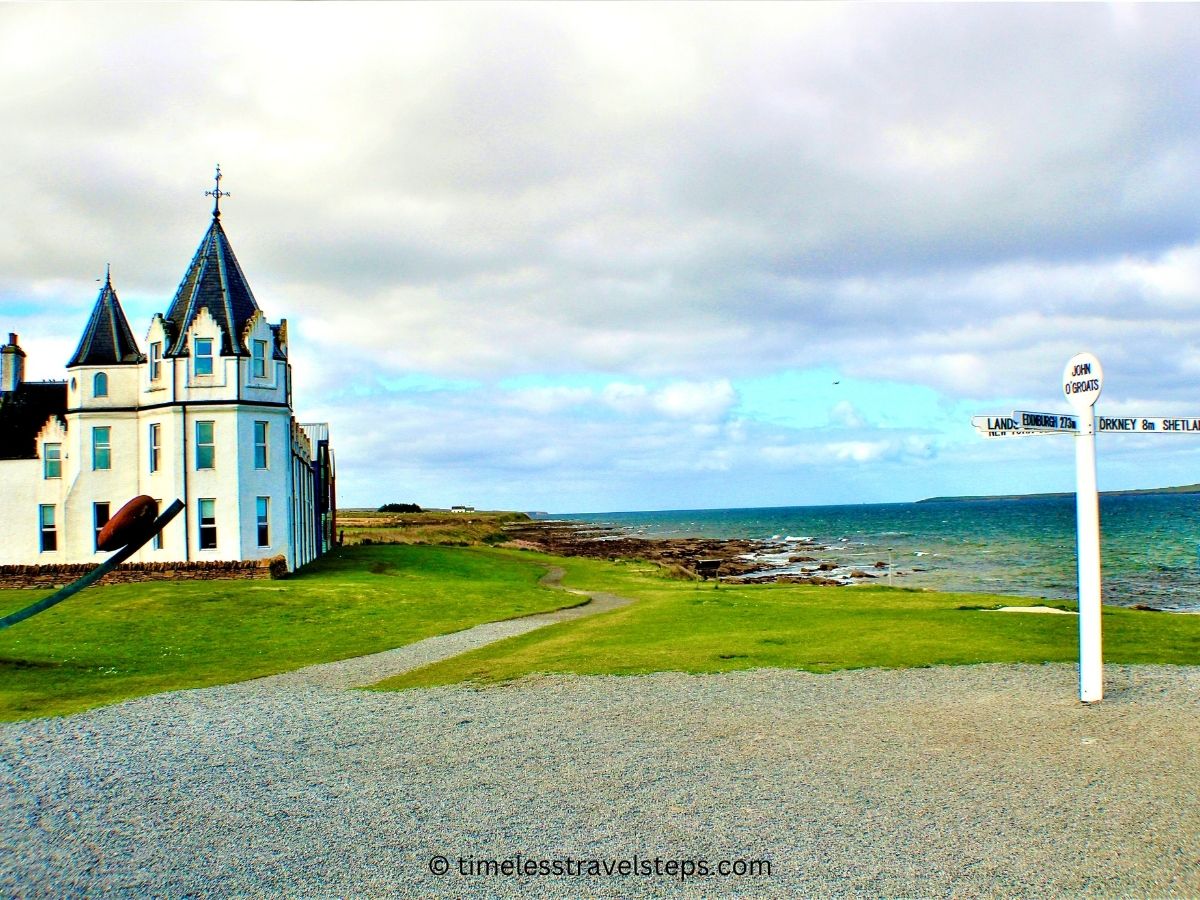
Where is John O’Groats
John O’Groats, situated at 📍58.6431° N latitude and 3.0697° W longitude, is a quaint village with a population of 390 people, perched on Scotland’s northeastern tip on the mainland. Set within the region of Caithness, this small and remote area in the far north is known for its rich prehistoric heritage, striking rugged coastlines, and significant seabird colonies. When you visit John O’Groats, you may catch sightings of various seabirds, including puffins, which is one of the area’s many attractions.
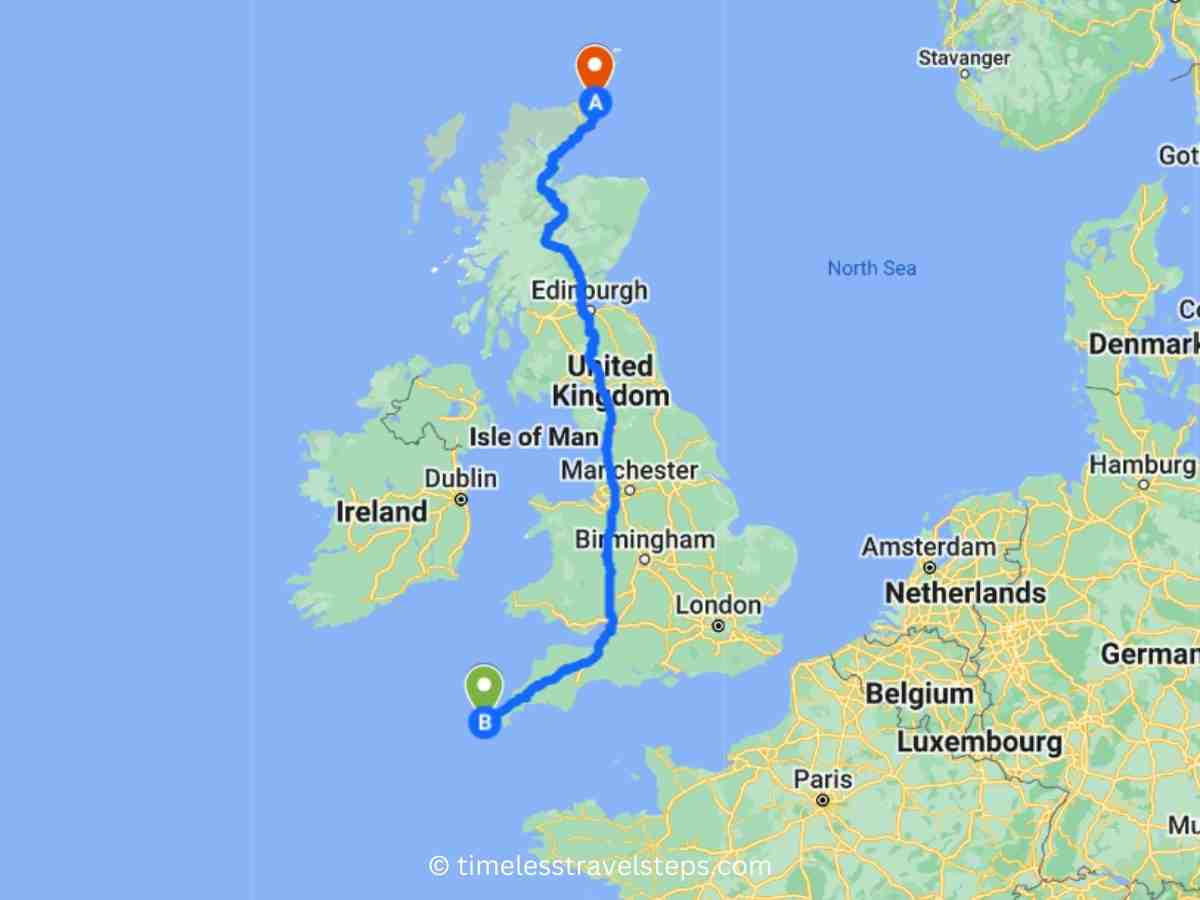
Getting to John O’Groats by Car and Public Transport
John O’Groats is undoubtedly worth visiting, and getting there is part of the adventure that this Scottish gem offers. Reaching this iconic destination is a journey through some of Scotland’s most picturesque landscapes. Driving is the best way to explore this fabulous region to your heart’s content and at your own pace. If you need to hire a car, take a look at the range of cars available here, a hire company I myself use.
By Car to John O’Groats
For those driving, John O’Groats at 📍58.6431° N, 3.0697° W is accessible via the A99, leading directly to the village. at the northern tip of mainland Britain.
If setting off from Inverness, journey along the A9 towards Latheron in the heart of Caithness. Continue your scenic drive on the A99 towards Wick, passing through Wick, and at Reiss, take a right turn, staying on the A99, leading directly to John O’Groats, famously known as the ‘End of the Road’.
Upon arrival, you’ll find ample parking available, including a spacious car park near the famous John O’Groats signpost (GPS: 58.6420° N, 3.0702° W). This parking facility is conveniently located, allowing easy access to the village’s main attractions and the starting point of many coastal walks.
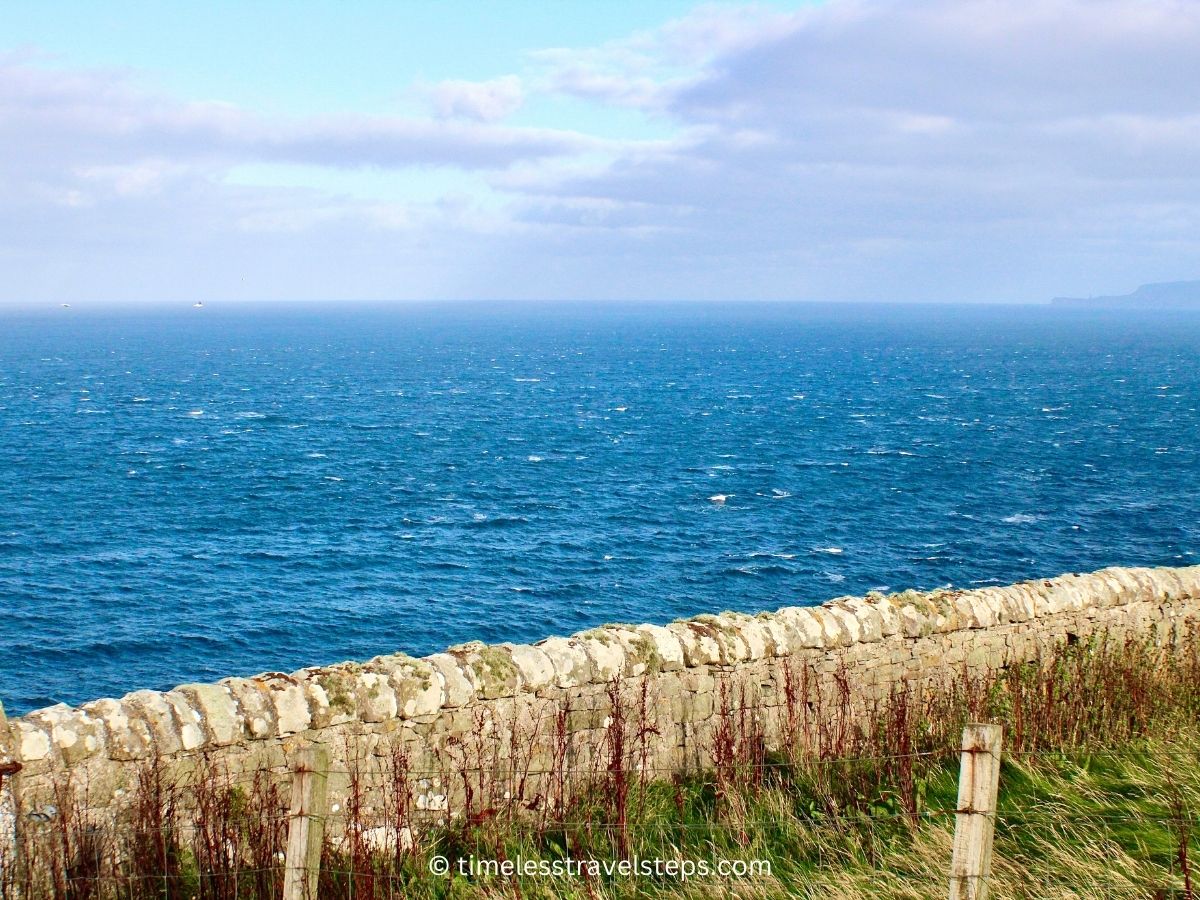
Getting to John O’Groats Without a Car: By Air, Bus, and Train to John O’Groats
For visitors without a car, or preferring public transport, John O’Groats is well-connected by bus services from major towns and cities in Scotland, including Inverness and Thurso. These routes offer a scenic journey, showcasing the rugged beauty of the Highlands. Once in John O’Groats, you’re ideally placed to explore the North Coast 500, embark on a ferry trip to the Orkney Islands, or simply enjoy the tranquil coastal atmosphere.
By Bus: Inverness bus station offers daily services to Wick and Thurso. From these towns, you can hop onto local buses for the final stretch to John O’Groats. Stagecoach route number 80 connects Thurso to John O’Groats. Additionally, a direct ferry bus service is available from Inverness right to John O’Groats.
By Train: John O’Groats itself does not have a train station, but the nearest railway stations are located in Wick and Thurso. These stations are part of the Far North Line, connecting with Inverness, a major transport hub in the Highlands. Direct trains from Inverness to Wick and Thurso are available three times daily from Monday to Saturday throughout the year, and a limited service on Sundays from June to September. From Wick or Thurso, you can take a bus or taxi to reach John O’Groats, approximately a 20-30 minute journey. Find train schedule and tickets here.
By Air: Wick Airport (Contact: 01955 602215) is the closest airport, followed by Inverness Airport, with services operated by Eastern Airways and FlyBe.
On Foot: For the truly adventurous, consider the 874-mile trek from Land’s End to John O’Groats, joining the ranks of the ‘End to Enders’.
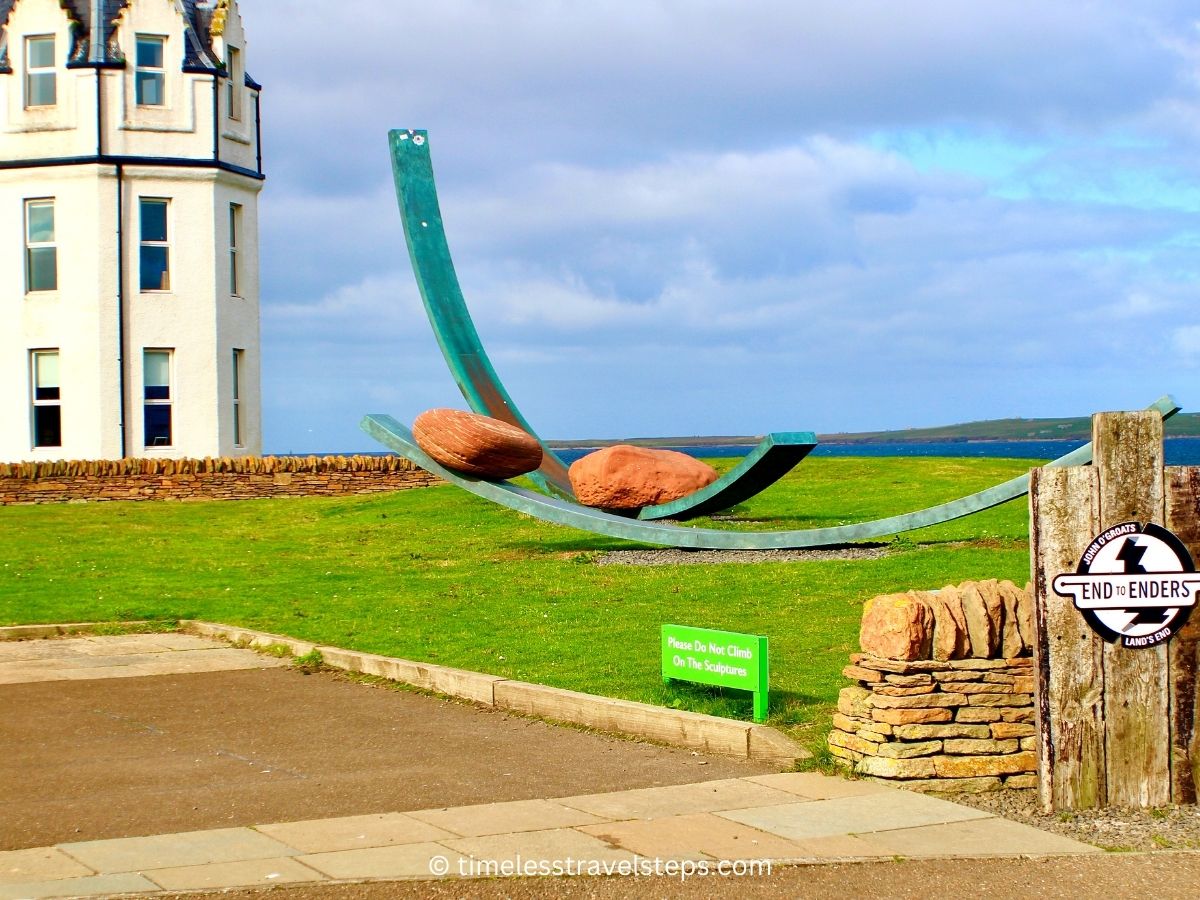
John O’Groats: Geographic and Historical Overview
John O’Groats, often questioned for its worthiness as a travel destination, stands proudly as a beacon of history and culture at the northernmost tip of Scotland’s mainland. Its geographic location, paired with its historic origins, makes it an enthralling spot and a compelling reason to visit by history enthusiasts and travellers alike.
Georgraphic Overview
Positioned strategically at one end of the legendary Land’s End to John O’Groats journey, the village marks one extreme of the British mainland, creating a sense of charm and mystery. Its proximity to the North Coast 500 brings it into the spotlight as a key destination in the Caithness region, offering a gateway to the rugged beauty and ancient mystique of the Scottish Highlands. This route, winding through some of Scotland’s most breathtaking landscapes, highlights John O’Groats’ significance not just as a geographical landmark, but as a cultural and historical treasure.
Historical Overview
The village’s name, intriguingly, comes from Jan de Groot, a Dutchman who, according to local lore, operated a ferry from the Scottish mainland to Orkney in the 15th century. According to legend, he charged a groat (an old coin worth four pence) for the passage, giving rise to the name ‘o’ Groats’. However, it’s more likely that the name is derived from the Dutch ‘de groot’, translating to ‘the large’, reflecting de Groot’s own surname rather than the fare he charged. His presence marked the foundations for the vibrant community that thrives there today.
While the village of John O’Groats is named after Jan de Groot, the region’s history is deeply intertwined with the Vikings. The original settlers of this area, and much of the Northern Scottish coast, were indeed Vikings. The Norse influence is evident in the history and culture of the Caithness region, including place names, language remnants, and archaeological findings.
The Vikings began to invade and settle in the northern parts of Scotland, including the area around John O’Groats, around the late 8th century. Their presence in this region was part of a larger pattern of exploration, trade, and settlement throughout the North Atlantic. The Norsemen, as they were also known, established significant settlements and had a profound impact on the culture and demographics of these regions.
In essence, John O’Groats is worth visiting not only for its stunning location but for the rich tapestry of history and culture that it represents. While it is named after a later historical figure, the Norse legacy contributes to the unique character and appeal of John O’Groats, which makes it a fascinating destination for those interested in the complex layers of Scottish history.

15 Compelling Reasons that Make John O’Groats a Must-Visit Destination
Discover why this Scottish locale is a treasure trove of experiences. Here are my suggestions of the nine unmissable highlights that showcase the best of what makes John O’Groats an essential destination that is absolutely worth visiting for you.
1. Stacks of Duncansby
The path to the Duncansby Stacks, starting from the car park at Duncansby Head Lighthouse, exemplifies why John O’Groats is worth visiting. This delightful coastal walk, meandering over gentle grassy terrain, is ideal for a scenic cliff-top stroll. Though often windy even on good days, it’s a haven for wildlife and offers a view of the remarkable sea stack, a testament to nature’s endurance over countless years.
Extending about 1.2 kilometers one way, and approximately 2.5 kilometers for the round trip, it’s accessible for walkers of all skill levels. Depending on your pace and the time you take to admire the scenery, reaching the stacks usually takes between 20 to 30 minutes. This time frame might vary based on your walking speeds and the moments you choose to pause, whether it’s for capturing photos or watching the local wildlife, believe me, you will make many stops on this walk. The walk to the Stacks of Duncansby further highlights the natural charm of John O’Groats, that affirm it is a destination worth visiting.
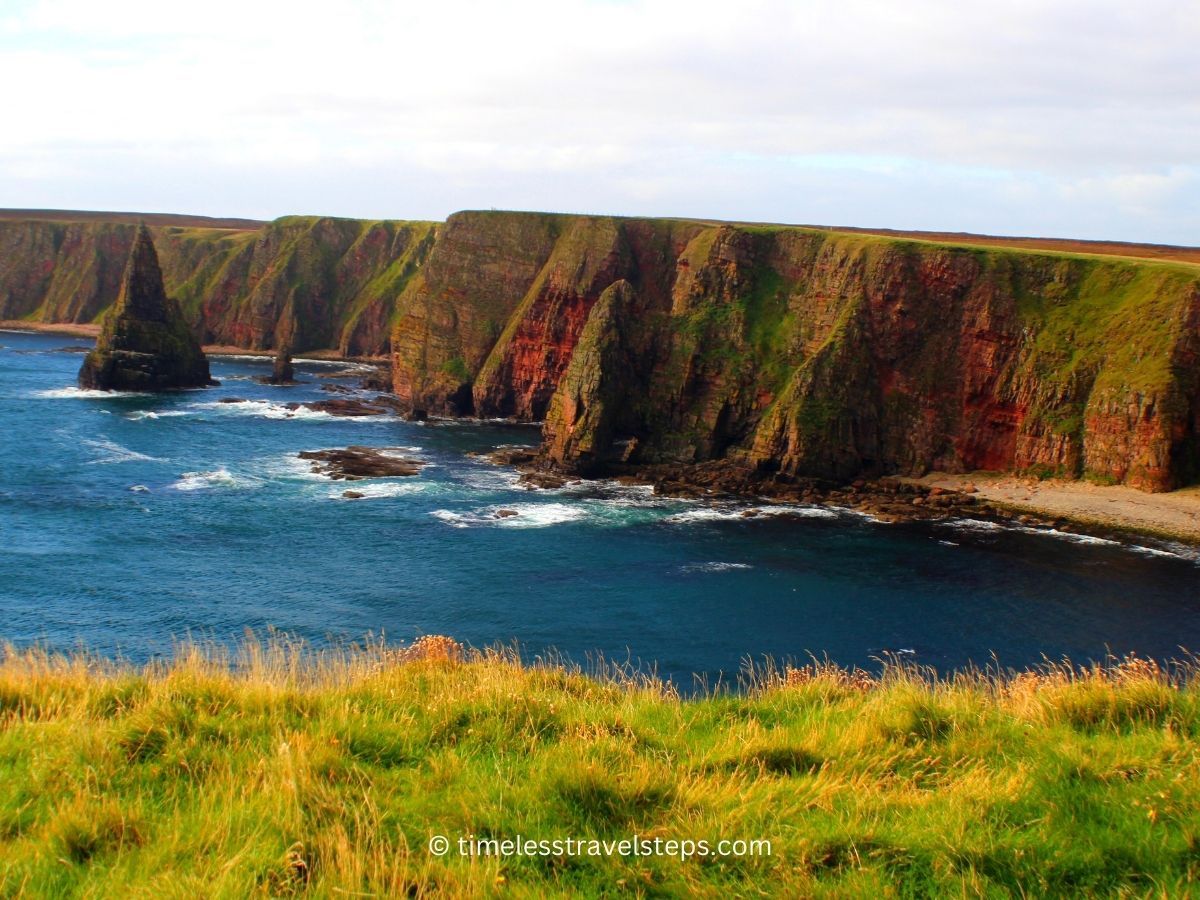
2. Duncansby Head Lighthouse
John O’Groats, frequently debated if it’s a worthy destination on a Scotland road trip, offers a resounding yes, especially when considering the Duncansby Head Lighthouse. The lighthouse’s location near one of Scotland’s most northerly points enhances the allure of John O’Groats.
Built in 1924 to aid maritime navigation through the challenging Pentland Firth, the Duncansby Lighthouse is notable for its unique construction on hollowed ground, adding to its architectural intrigue. You can’t visit the lighthouse itself as it is not open to the public, but the surrounding cliffs and the rugged shoreline are a magnet for visitors. The views of the North Sea’s tumultuous waters set against the backdrop of Caithness’ natural beauty are absolutely stunning. It’s an idyllic spot for photographers and nature lovers, offering panoramic vistas and a chance to observe the region’s abundant wildlife. Embodying the spirit of Scottish maritime history, the Duncansby Head Lighthouse is a must-see in John O’Groats.
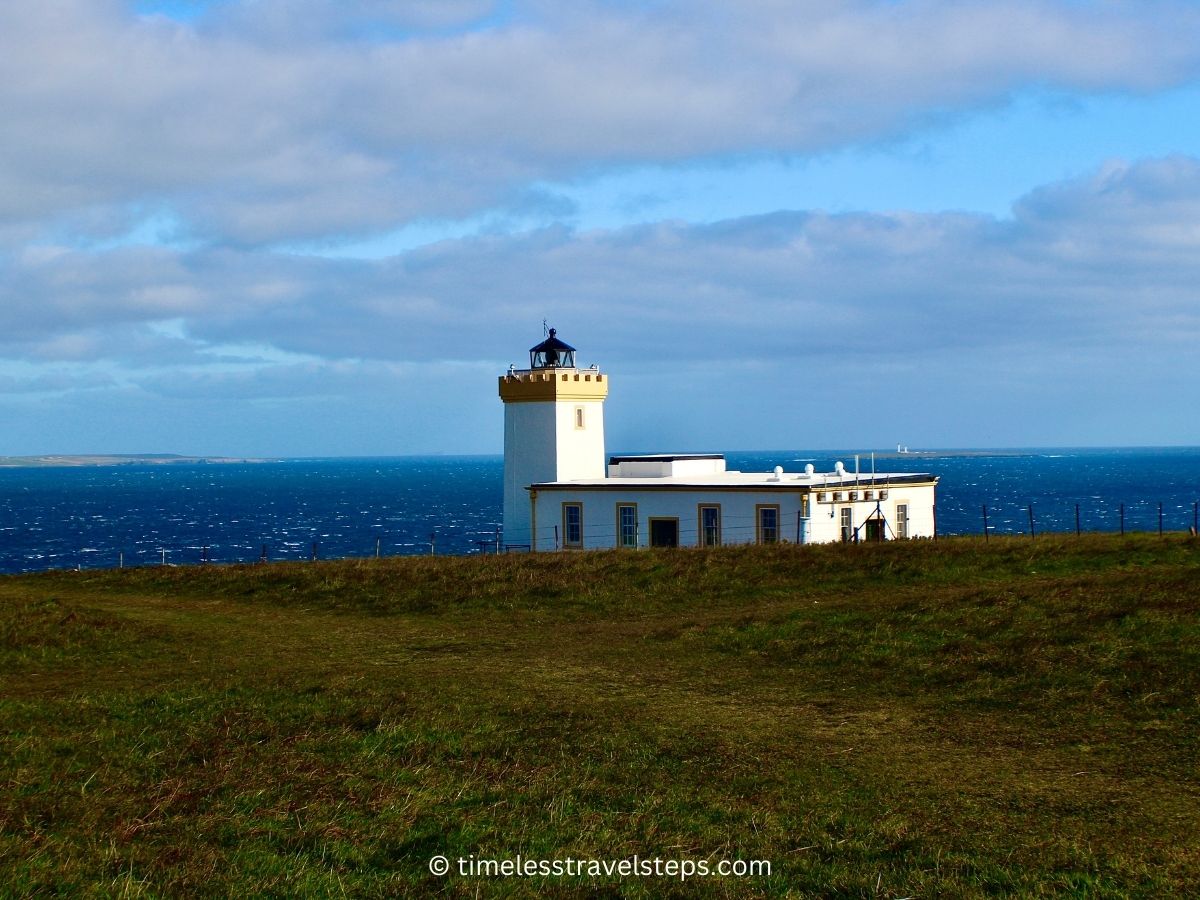
3. A Must-Visit Photo Stop: Capturing Memories at The John O’Groats Signpost
The John O’Groats signpost, an iconic symbol of this Scottish village, is more than just a landmark; it’s a must-photograph spot where practically everyone takes a photo. As a focal point for visitors, this famous signpost not only marks the village as one end of the longest distance between two inhabited British points — the other being Land’s End in Cornwall — but also serves as a cherished memory for countless travellers, symbolizing the start or end of an epic journey across the UK, often undertaken by cyclists and walkers.
Erected in the 1960s, the signpost was originally installed by the local postmaster, Hamish Sutherland. It lists distances to various destinations, including Land’s End and the Orkney Islands, serving as a geographical marker that connects John O’Groats to other notable locations both locally and globally.
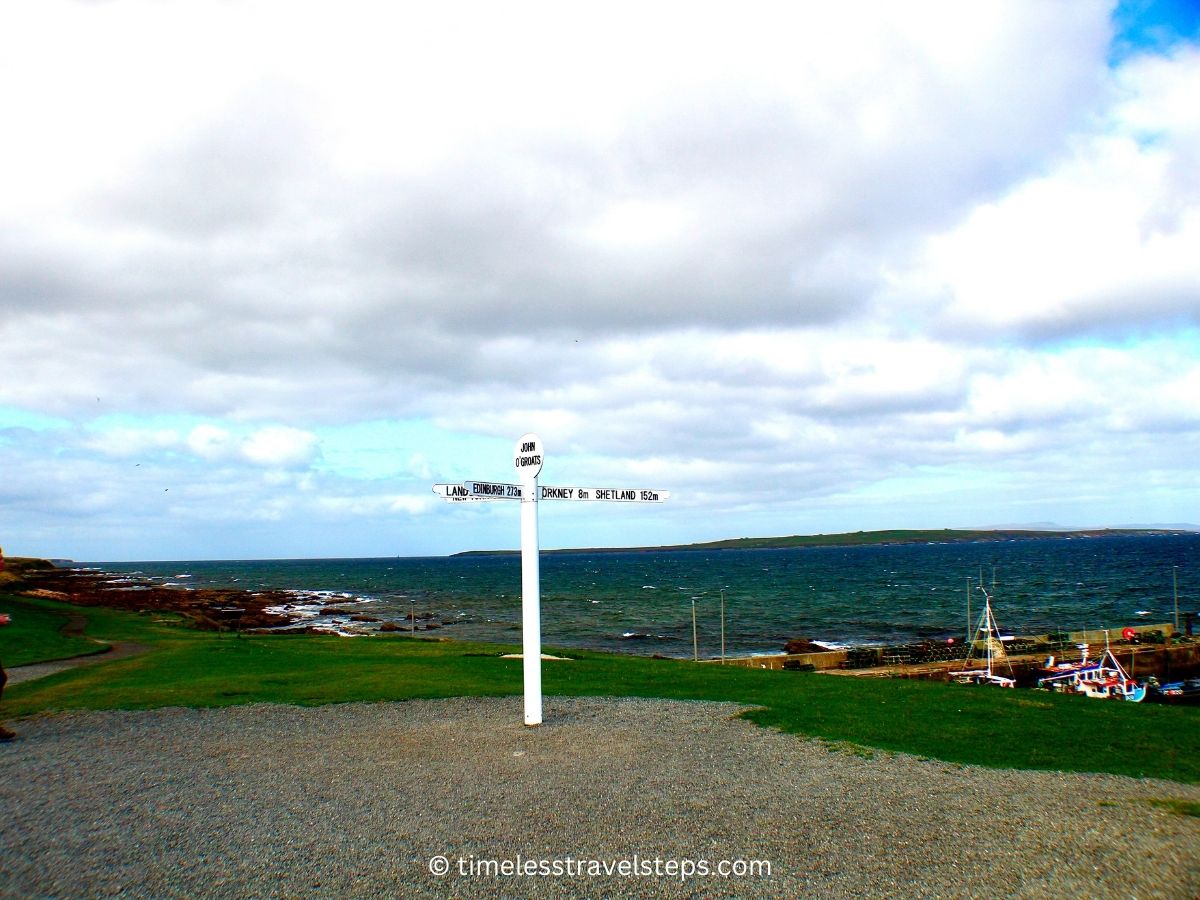
4. John O’Groats Harbour
John O’Groats Harbour, a charming and bustling port serves as the departure point for ferries to the Orkney Islands, making it a vital link for exploring further into Scotland’s rich archipelago. The harbour itself offers stunning sea views and is an ideal spot for observing local wildlife and enjoying the serene maritime atmosphere.
5. Dunnet Head Marker
The Dunnet Head marker is a notable landmark located at Dunnet Head, which lies near John O’Groats in Scotland. This marker, often confused with John O’Groats itself, holds its own unique significance.
The Dunnet Head marker is the true most northern point extremit of mainland Britain, rather than the more commonly assumed John O’Groats, which is actually the northeasternmost point.
Dunnet Head extends into the Pentland Firth and is characterized by its dramatic cliffs and expansive views of the Orkney Islands. The marker at Dunnet Head, is a simple sign that signifies the northernmost point of the British mainland, contrasting with Land’s End in Cornwall, the southernmost point.
The area around Dunnet Head is also renowned for its natural beauty, including a rich array of birdlife and stunning sea views, making it a must-visit for nature enthusiasts and those seeking to experience the raw and rugged landscape of the Scottish Highlands.
Visiting the Dunnet Head marker from John O’Groats is not just about visiting a geographical point but a symbol of the remote and famed unspoilt beauty of northern Scotland. A visit here offers you a unique perspective and a sense of achievement for reaching the furthest north point of the mainland.
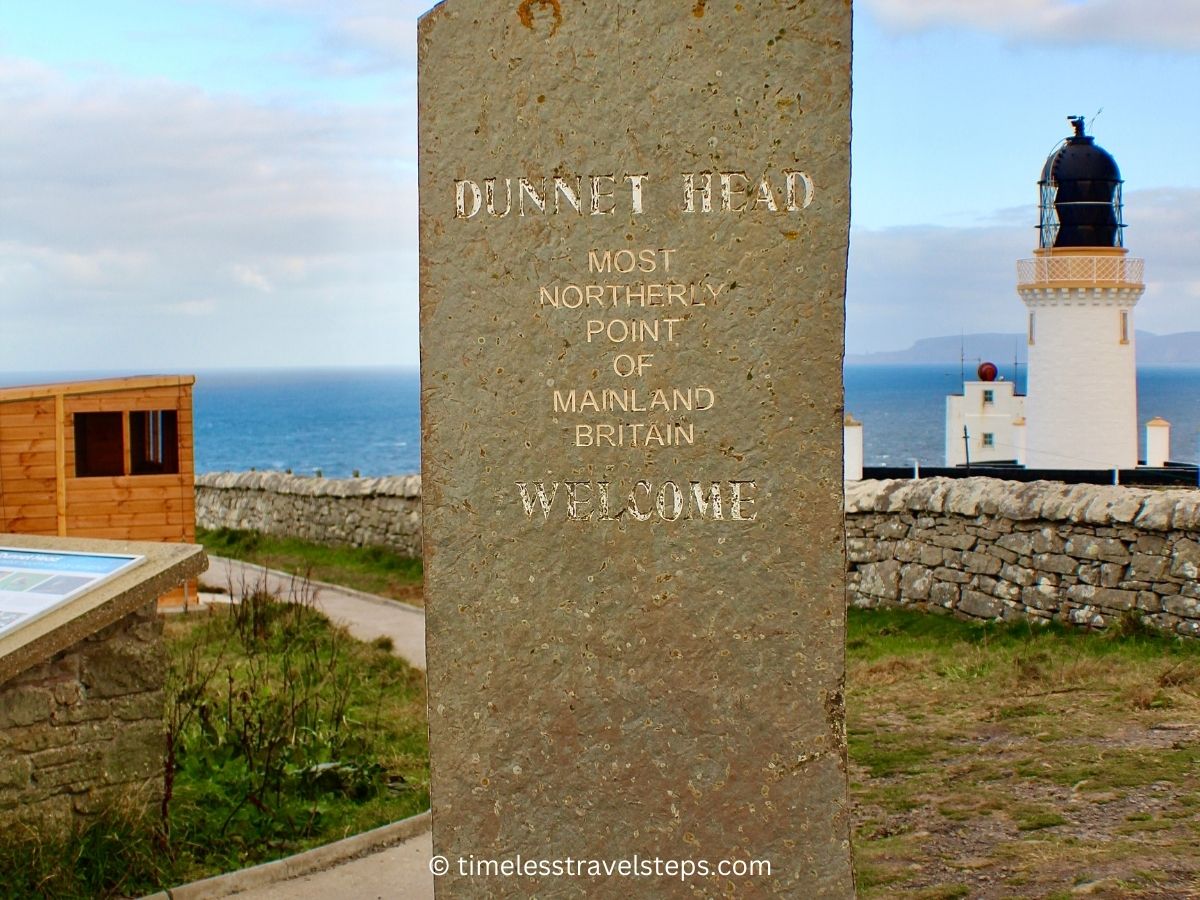
Confusion associated with Dunnet Head and John O’Groats
The confusion often associated with Dunnet Head and John O’Groats stems from the misconception about which location is the northernmost point of mainland Britain. While John O’Groats is widely known and often mistakenly believed to be the northernmost point, it is actually Dunnet Head that holds this title. John O’Groats, located in the northeastern part of Scotland, is famous as one end of the longest distance between two inhabited points in Britain, the other being Land’s End in Cornwall.
This distinction has made John O’Groats a popular tourist destination, often associated with long-distance journeys and adventures across the UK. On the other hand, Dunnet Head, located just a few miles west of John O’Groats, is the true northernmost point of the British mainland. It extends further north into the Pentland Firth than John O’Groats, but it is less well-known to the general public. This lack of awareness leads to the common misconception that John O’Groats is the furthest point north, overshadowing Dunnet Head’s geographical significance. Therefore, the confusion lies in the difference between popular perception and geographical reality, with John O’Groats often being recognized for a title that rightly belongs to Dunnet Head.

6. Triangulation Station
The Triangulation Station, also known as the Ordnance Survey Trig Point, is one that may be easily overlooked by visitors. However, it is a significant marker for several reasons. You’ll find this trig point on the grassy terrain as you walk towards the Duncansby Stacks.
Trig points were established by the Ordnance Survey to create highly accurate maps of the UK. These concrete pillars, found across the country, were used for triangulation measurements, a process vital for precise map-making before the advent of modern GPS technology. Therefore, the trig point at John O’Groats is worth noting on your trip to John O’Groats as it offers a deeper connection with the landscape.
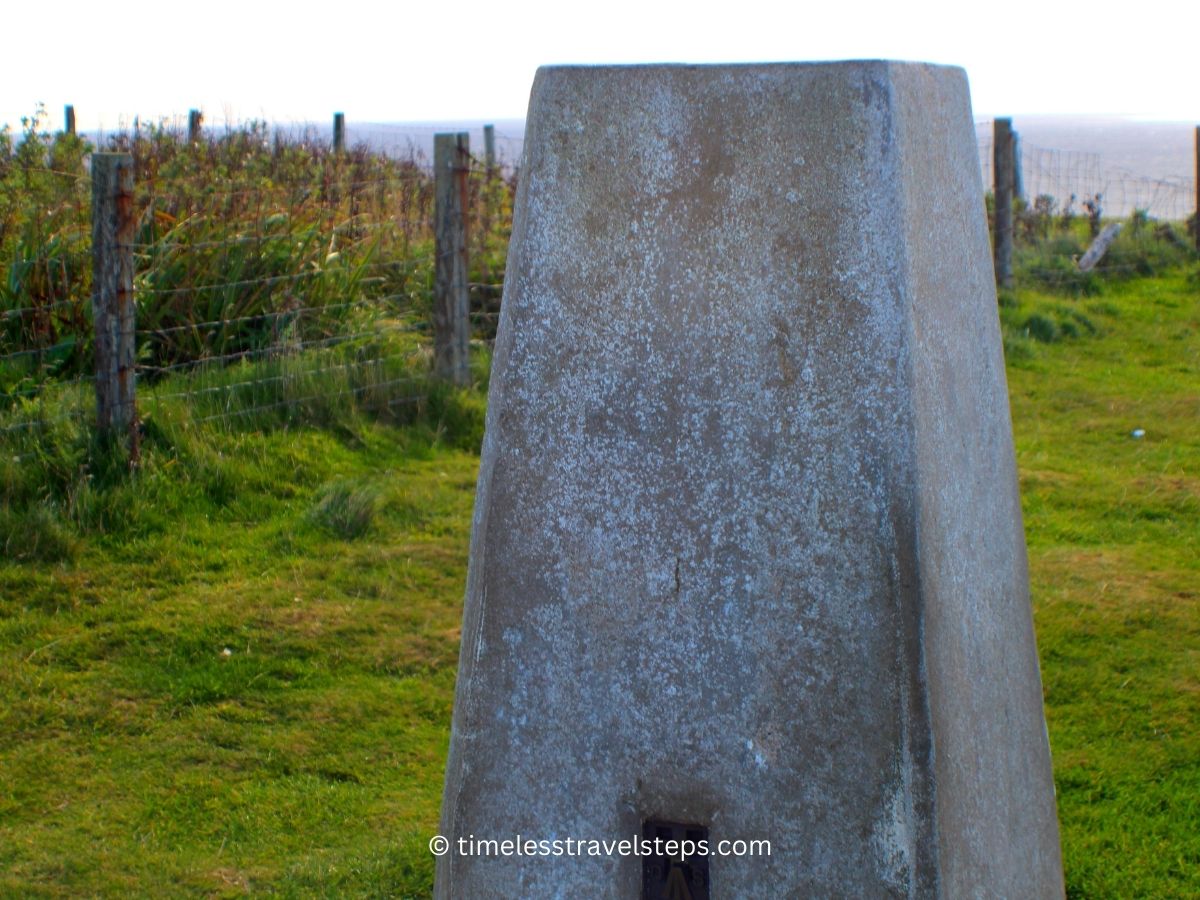
7. Rugged Coastline: One of the Many Reasons Why John O’Groats is Worth Visiting
The rugged coastline near John O’Groats in Scotland is special and holds a unique appeal for several reasons:
Dramatic Natural Beauty: The one view I was absolutely drawn to was the harsh natural beauty of the coastline. This part of Scotland is characterized by its dramatic cliffs, rocky outcrops, and stunning sea arches, which are the result of centuries of erosion by the North Sea and the Atlantic Ocean. There is something special about the raw, untamed nature of the coastline that creates breathtaking vistas which are both awe-inspiring and humbling.
Wildlife Haven: The coastline serves as a haven for an array of wildlife, including seabirds, seals, and even dolphins and whales. The cliffs provide nesting sites for numerous bird species, making it a prime spot for birdwatching. The surrounding waters are rich in marine life, offering opportunities for wildlife spotting that are unparalleled elsewhere.
Photography and Hiking Destination: For photographers and hikers, the rugged coastline presents endless opportunities. Whether it’s capturing the perfect sunrise over a sea stack or exploring coastal trails, the area’s natural beauty provides a perfect backdrop for outdoor activities.
Geological Interest: Geologically, the coastline near John O’Groats is fascinating. It showcases a variety of rock formations, providing insights into the Earth’s history and the natural processes that have shaped the Scottish Highlands.
Cultural and Historical Significance: The coastline is steeped in history, from ancient Pictish settlements to tales of Viking invasions. This history, combined with traditional Scottish culture, adds a rich layer of storytelling and heritage to the landscape.
In essence, the rugged coastline near John O’Groats is a microcosm of what makes Scotland’s natural landscape so special: it’s a blend of stunning beauty, rich wildlife, outdoor adventure, geological wonder, and deep cultural history. This combination not only makes it a visually captivating area but also a place of profound significance and interest, which undoubtedly make John O’Groats worth visiting.
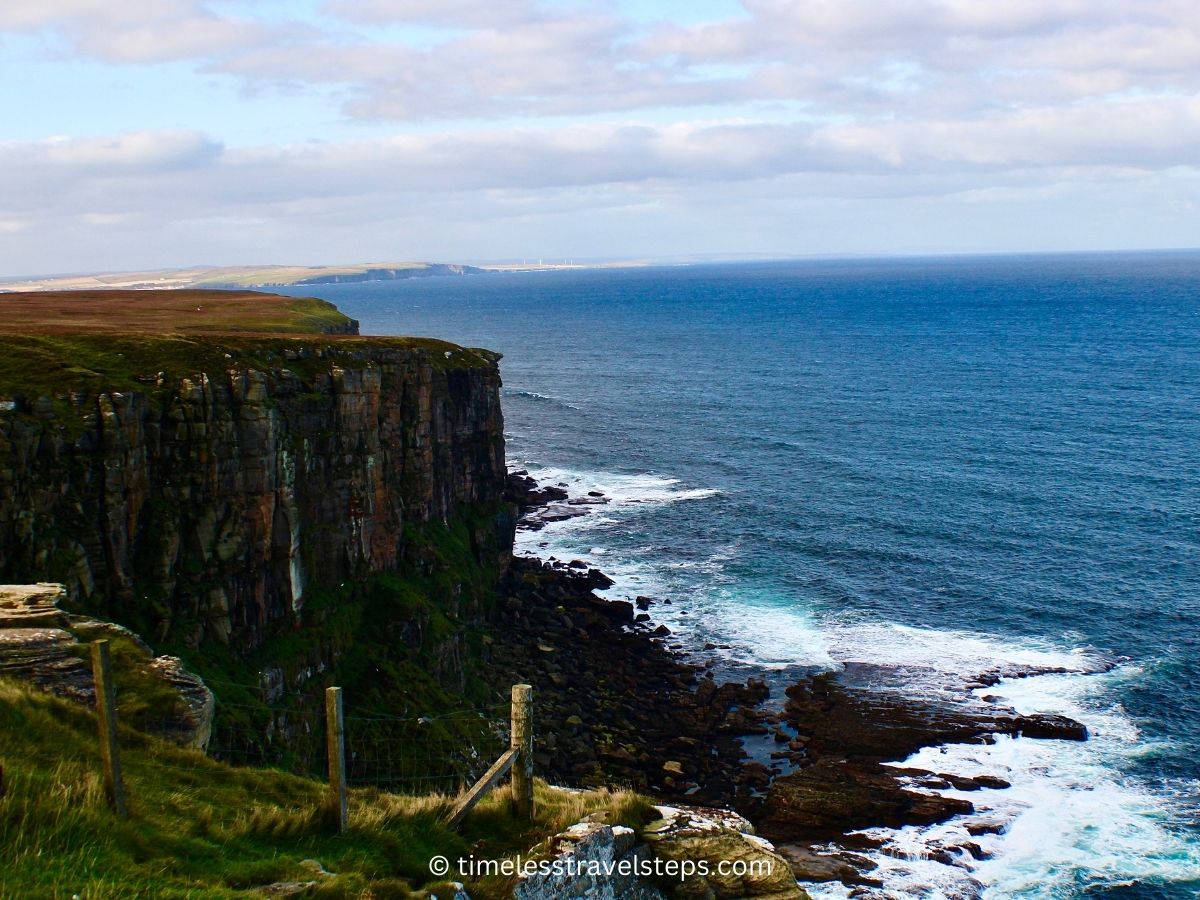
8. Castle Sinclair and Castle Girnigio
Just a short journey of a 20-minute drive from John O’Groats, the historic Castle Sinclair Girnigoe, is a must-visit destination along Scotland’s Far North.
This captivating castle ruins stands on the Noss Head headland, offering spectacular views across Sinclair’s Bay and the wild North Sea. This site, originally two distinct castles, Castle Girnigoe and Castle Sinclair, built in the 15th and early 17th centuries respectively, have merged into a single, intriguing ruin. This amalgamation tells a story of Scotland’s past, particularly highlighting the legacy of the influential Clan Sinclair.
The approach to the castle features a short walk from a pay-and-display car park, with informative boards along the way, shedding light on the castle’s historical significance and architectural details. Though the castle is now in ruins, its remaining structure still evokes a sense of its former magnificence, allowing you to imagine its past splendour.
While accessible by bus from John O’Groats, driving is the most convenient way to explore this nook of Scotland. Castle Sinclair Girnigoe, with its stunning location and rich history, is a destination that must top your list when visiting John O’Groats or the North Coast 500.
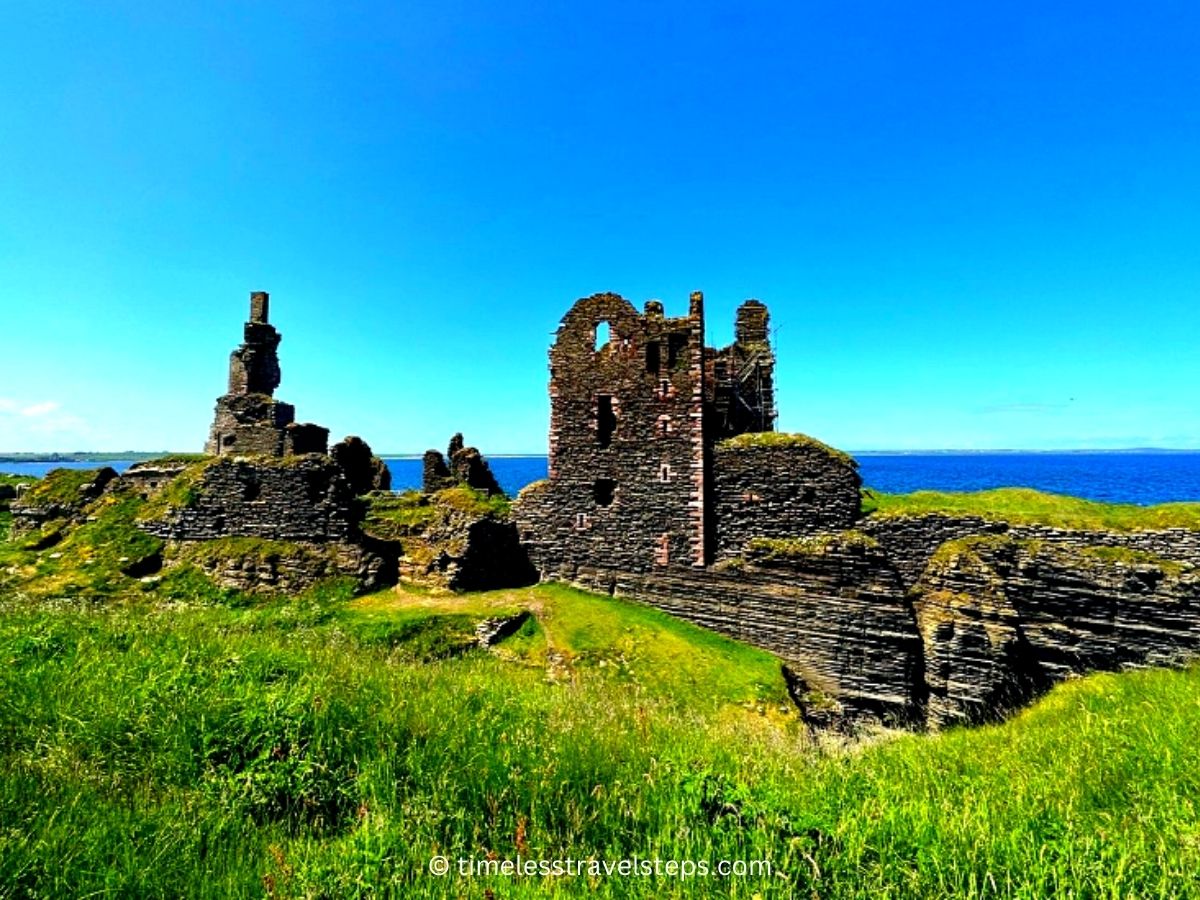
9. Castle of Mey and Gardens
The Castle of Mey and its enchanting gardens, located about a 15-minute drive from John O’Groats, is a must-visit destination for several compelling reasons,
Firstly, the Castle of Mey holds a unique place in British history as the beloved summer residence of the late Queen Mother. After purchasing the castle in 1952, she lovingly restored and preserved it, leaving a legacy that visitors can now experience. The castle’s interior, adorned with personal artifacts and photographs, offers a rare glimpse into the Queen Mother’s life and her contributions to preserving this piece of Scottish heritage.
Secondly, the gardens at the Castle of Mey are a horticultural delight. Despite the challenging northern climate, the gardens thrive, showcasing a range of plants, flowers, and even a vegetable garden that was once used to supply produce for the castle’s kitchen. The care and attention given to these gardens make them a serene and picturesque spot, perfect for leisurely strolls.
Finally, its proximity to John O’Groats makes the Castle of Mey an easy and worthwhile addition to your itinerary in the area. Situated on the northern coast of the Caithness region, it offers stunning views over the Pentland Firth to the Orkney Islands, combining historical intrigue with natural beauty. This combination of royal history, horticultural beauty, and scenic setting makes it an essential stop when visiting John O’Groats that make it worth visiting.
10. Pulteney Distillery, Wick
John O’Groats is worth visiting as it provides the perfect opportunity for whisky enthusiasts to explore the renowned Pulteney Distillery in nearby Wick. Just a 30-minute drive from John O’Groats, this distillery is famed for producing the exquisite ‘Maritime Malt,’ a testament to its coastal heritage. A tour here isn’t just educational; it’s an immersive experience into the world of whisky making. From observing the distillation process to savouring tastings of their distinct whiskies, you are treated to a journey through the flavours and aromas that make Scottish whisky globally celebrated.

11. Orkney Day Trip
Just a short ferry ride from John O’Groats lies the archipelago of the Orkney Islands, a treasure trove of history and natural beauty. These islands are a paradise for anyone interested in archaeology, with sites like Skara Brae and the Ring of Brodgar offering a window into ancient civilizations. The charming towns of Orkney, with their unique character and friendly locals, further enrich this day trip, making it a highlight for visitors to the area.
12. North Coast 500
The famed North Coast 500 route, which runs east of John O’Groats, is a dream for road-trippers. This route meanders through some of Scotland’s most spectacular landscapes, featuring secluded beaches, rugged cliffs, and picturesque villages. Driving this route offers a chance to experience the raw beauty of the Scottish Highlands at your own pace, with John O’Groats serving as a pivotal starting or ending point.
13. Northern Lights Spotting makes John O’Groats, a Destination Worth Visiting
For those visiting at the right time, John O’Groats and its surroundings can offer the magical experience of witnessing the Northern Lights. The Aurora Borealis, with its mesmerizing display of colours in the night sky, is visible here under the right geomagnetic conditions, particularly during the darker months. This natural phenomenon adds a touch of wonder to the already magnificent Scottish nightscape, creating unforgettable memories for those lucky enough to see it.
14. Local Attractions and Shopping
Besides scenic walks and historical sites, John O’Groats boasts attractions like the Groats Brewery, where you can savour local ale. The village’s gift shops offer unique souvenirs, from handmade crafts to Scottish delicacies, making for perfect reminders of your trip.
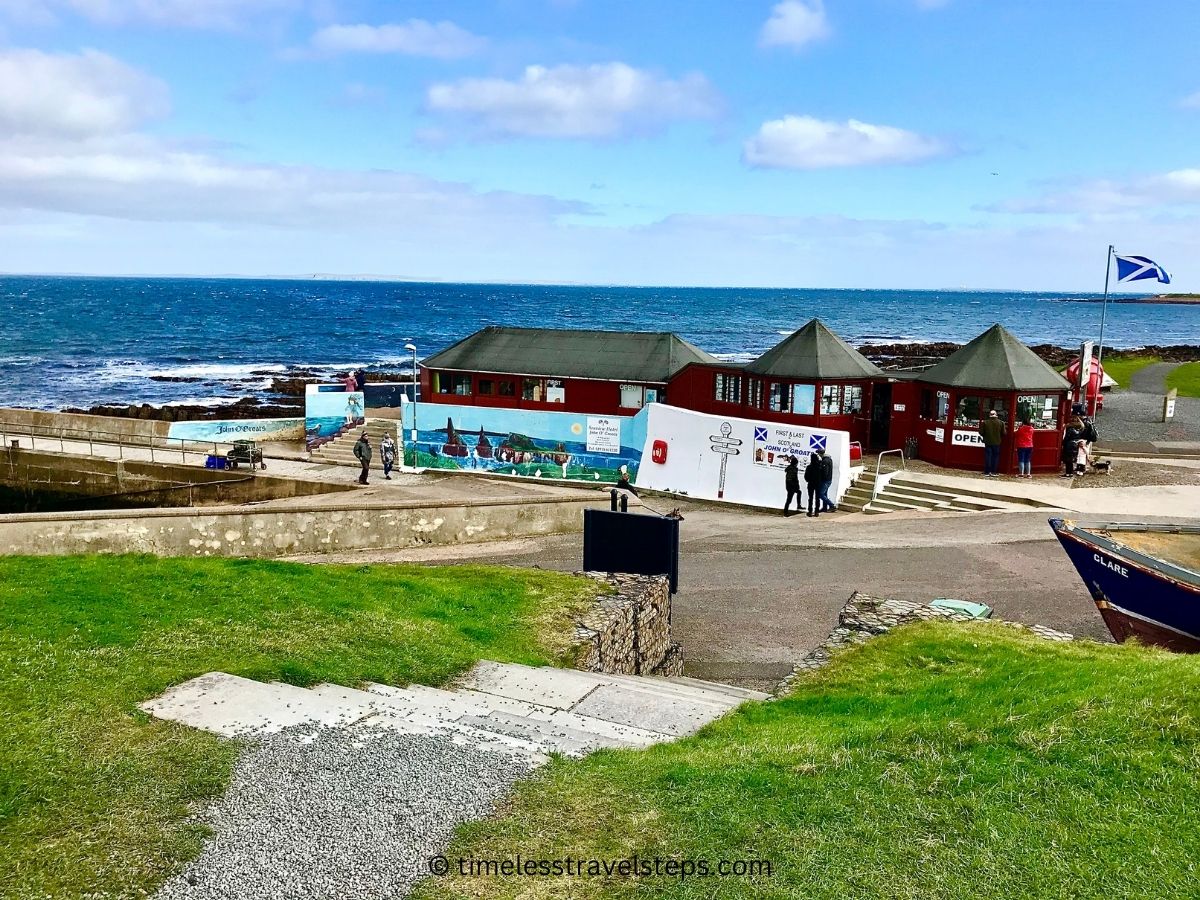
15. Wick and Thurso
One of the many reasons why a visit to John O’Groats is worth considering is its close proximity to the charming towns of Wick and Thurso. Nestled in the picturesque landscape of the Scottish Highlands, these towns are surrounded by a serene backdrop dotted with sheep and Highland cows, often affectionately referred to as “coos.” These gentle giants, emblematic of the Scottish countryside, add to the region’s pastoral charm.
Wick, a historic town located in the Caithness region, is steeped in a rich maritime past. Known for its old harbour and the famous Old Pulteney Distillery, Wick offers a glimpse into Scotland’s whisky heritage and seafaring history. The town’s scenic coastline, complemented by its quaint streets and local history museum, makes it a delightful stop for those interested in cultural exploration.
Enjoy leisurely strolls along the harbour, savouring the tranquil sea views and the town’s quiet, understated beauty.
Thurso, on the other hand, is the northernmost town on the British mainland and serves as a gateway to the Orkney Islands. It boasts a vibrant surfing scene, with its beaches being some of the best in Scotland for surfing enthusiasts.
The town’s rich history is evident in its medieval church, Caithness Horizons museum, and the nearby Castle of Mey. Thurso’s blend of outdoor activities, historical sites, and its lively town center provides a comprehensive experience of Scottish town life.
Both Wick and Thurso, with their distinctive character, combined with the scenic beauty of the Highlands, make them worthwhile destinations in their own right, easily reached from John O’Groats

Accommodation and Dining
Where to Stay at John O’Groats
For a memorable stay in John O’Groats, consider these two exceptional options: The Inn at John O’Groats: This inn is a reincarnation of the iconic former John O’Groats Hotel, originally built in 1875. It has been newly refurbished into luxury apartments, offering a perfect blend of modern comfort and historic charm.
It’s part of Together Travel’s multi-million-pound regeneration of this picturesque natural wilderness in the North of Scotland. The Inn re-opened in September 2013, providing a luxurious stay with breathtaking views and convenient access to local attractions.
The Lodges by Together Travel: For those seeking a more private and serene experience, the 3-bedroom lodges offer unrivaled luxury and breathtaking views out to the Orkneys. These lodges feature extensive glass wall frontage, designed to bring the natural light and seascape directly into your living space. They provide an ideal retreat for families or groups looking to immerse themselves in the stunning Scottish landscape.
Accommodations like the Seaview Hotel offer a comfortable stay, with stunning views of the coast.
Dining in John O’Groats
Dining in John O’Groats is a delight, featuring fresh, locally-sourced seafood and traditional Scottish fare. From cozy cafes to elegant restaurants, there’s something to satisfy every palate.
Stacks Bistro and Coffee House: Nestled in the heart of John O’Groats, this charming establishment is a perfect haven for those seeking a peaceful coffee interlude. It delights its guests with a selection of homemade pastries and a variety of light, appetizing snacks.
Northern Sands Hotel Dining: Conveniently located near Dunnet Head, this hotel is renowned for its culinary offerings. It provides a more elaborate dining experience, featuring a menu that celebrates the richness of local ingredients and showcases the culinary delights of the region.
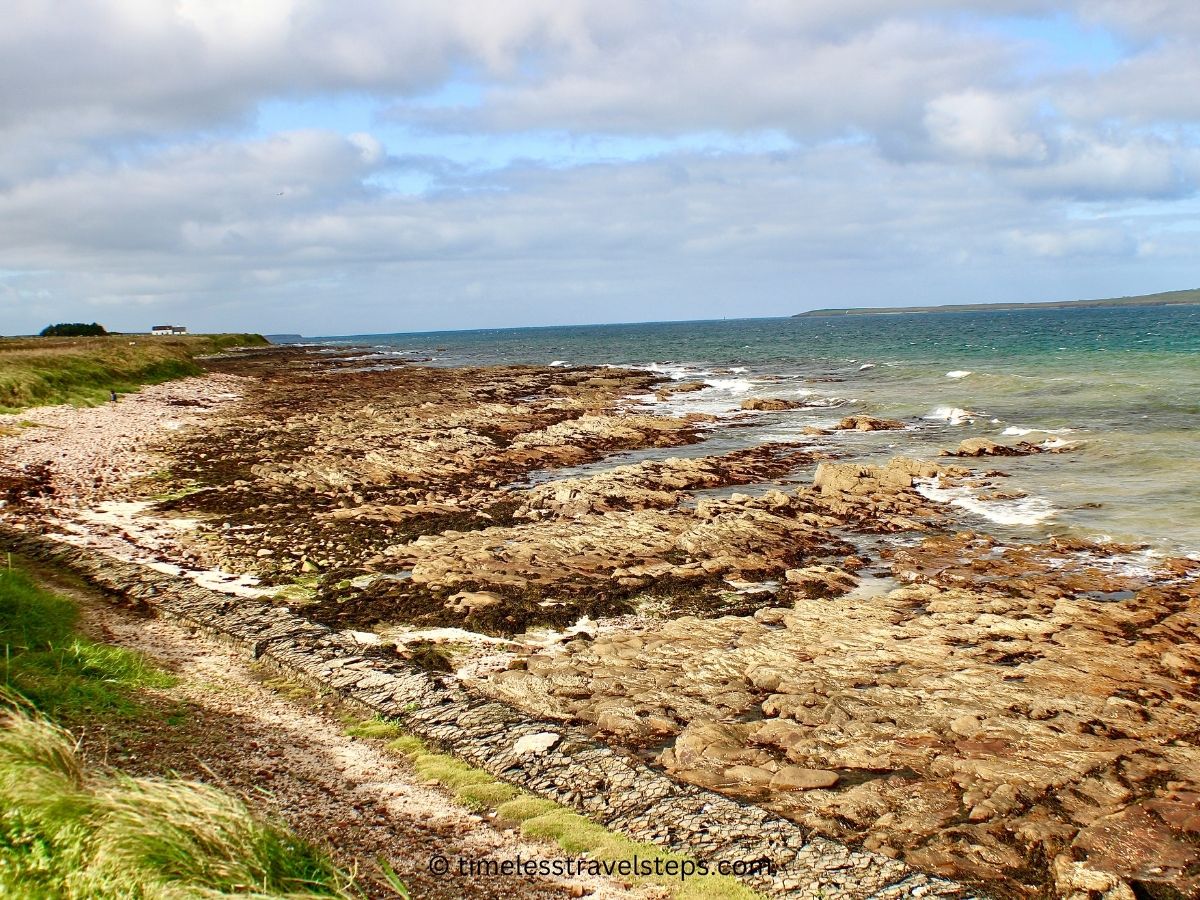
FAQs Related to ‘Is John O’Groats Worth Visiting?’
John O’Groats is renowned for its dramatic landscapes, including rugged coastlines and picturesque sea views. It’s the northeasternmost point of the British mainland, making it a symbolic start or end point for cross-country journeys. The village also offers rich wildlife, historical sites, and proximity to the Orkney Islands.
Walking from Land’s End to John O’Groats typically takes about 10-12 weeks, covering a distance of approximately 1,931 kilometers (1,200 miles), depending on the route and individual pace.
Yes, John O’Groats has a beach. Though not vast, the beach offers scenic views of the coastline and is a peaceful spot for walks and relaxation.
The nearest island to John O’Groats is the Island of Stroma. Located just 6.8 kilometers (4¼ miles) away. Stroma is an uninhabited island in the Pentland Firth, northwest of John O’Groats. It is closer than the Orkney Islands, which are about 10 kilometers (6 miles) away. Stroma, known for its historical significance and unique landscape, provides a fascinating insight into the local geography near John O’Groats.
The ferry crossing from John O’Groats to Orkney typically takes about 40 minutes, making it a convenient and popular route for visitors to the islands.
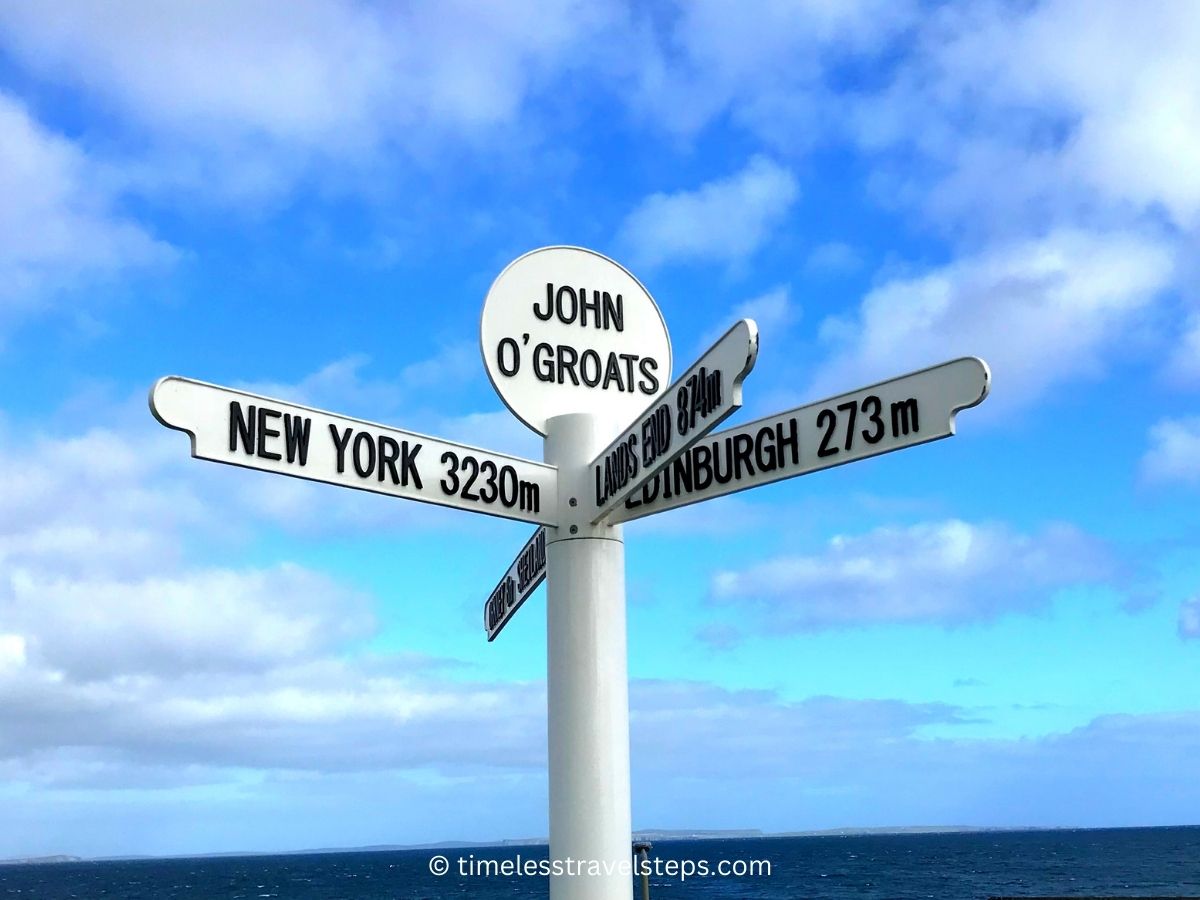
…as the deliberate escapist and a mindful wanderer…
A visit to John O’Groats and its surrounding areas offers a unique opportunity to immerse in the wild, unspoilt beauty of Scotland. To truly embrace this experience, consider hiring a car,. I found driving provided the freedom to explore the picturesque landscapes, historic sites, and charming local towns at my own pace.
If you have the time, staying overnight will enhance your experience. The additional time allows you to indulge in the tranquility of Scotland’s northernmost region under the vast, starry skies. The experience is timeless. This approach to slow travel not only connects you more deeply with the region’s natural wonders but also enriches your understanding of Scottish culture and heritage. John O’Groats, with its proximity to captivating destinations like Castle Sinclair Girnigoe and the Castle of Mey, serves as more than just a stopover; it’s a gateway to a truly memorable Scottish adventure.
I hope my post today has convinced you that John O’Groats, in the Far North of Scotland is truly worth visiting and has secured a spot in your Scotland itinerary.
Happy and Safe Travels Wherever Travel Takes You, xx

I, Georgina, did get my photo at the famous John O’Groats sign :), a timeless experience struck off my life list.
Stay Connected with Timeless Travel Steps for the latest in our Travel News





